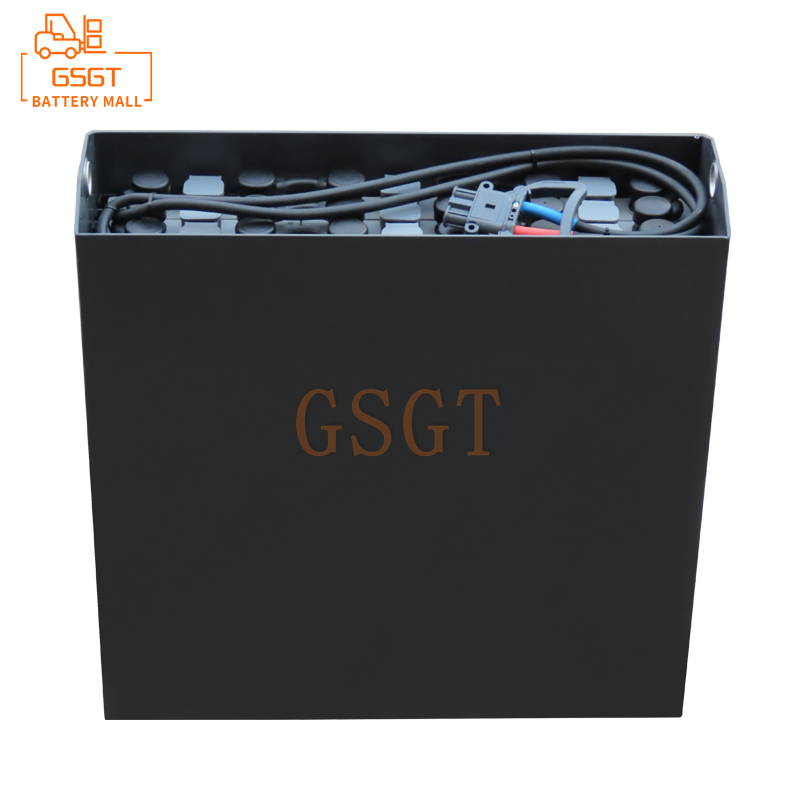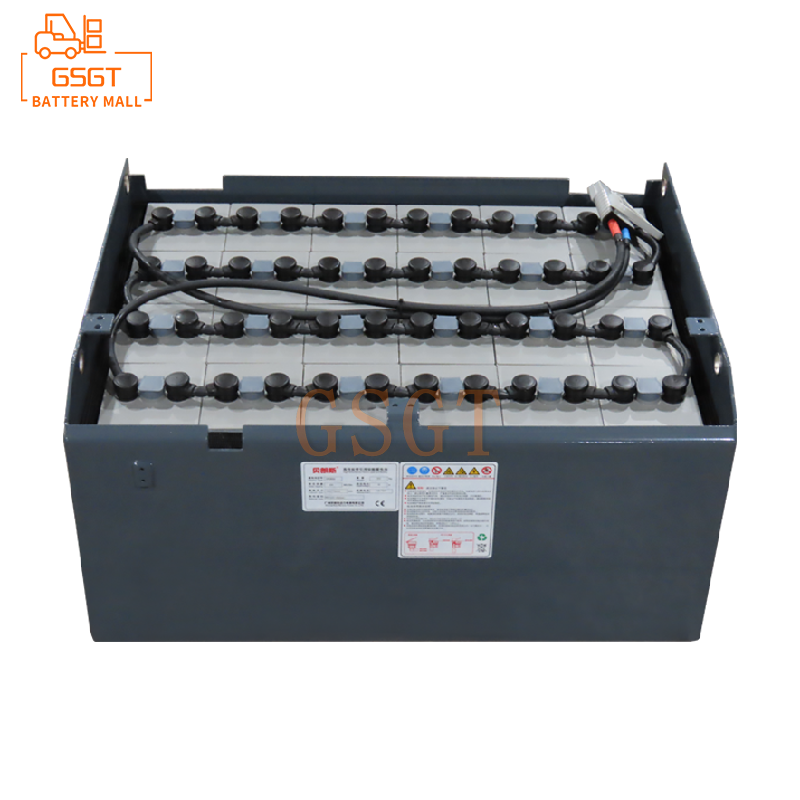Time:2025-07-24 09:25:59
Browse:614
In the vast field of industrial production, forklifts play an indispensable role, and lead-acid batteries, as the core power source of forklifts, their stable and safe operation is directly related to the smooth progress of production and the life safety of personnel. Once lead-acid batteries have safety hazards, it may not only cause forklifts to suddenly stop, affecting production progress, but also trigger serious safety accidents such as fires and explosions, resulting in huge property losses and casualties. Therefore, conducting a comprehensive and meticulous safety hazard inspection of lead-acid batteries for forklifts is a crucial task in the enterprise's safety production management.
Common safety hazards and their troubleshooting methods
Overcharging hazards and their investigation
Overcharging of lead-acid batteries in forklifts is an extremely common and dangerous safety hazard. When a battery is overcharged, intense chemical reactions occur inside, generating a large amount of hydrogen and oxygen. These gases accumulate inside the battery, causing a sharp increase in internal pressure and leading to bulging of the battery casing. If the situation continues to deteriorate, the gas may break through the shell and come into contact with a fire source in the air, causing an explosion with unimaginable consequences.
To eliminate the risk of overcharging, it is first necessary to regularly check the performance parameters of the charger. Check whether the output voltage and current of the charger match the rated parameters of the battery. If they do not match, it may cause overcharging. Secondly, during the charging process, closely monitor the battery's condition and pay attention to whether there is any abnormal heating or gas emission. When charging normally, the battery will slightly warm up. However, if the temperature is too high or a large number of bubbles emerge, it may be a sign of overcharging. At the same time, regularly observe whether the battery casing is bulging. Once bulging is found, stop charging immediately and conduct a comprehensive inspection of the battery and charger.
Over-discharge hazards and their investigation
Over-discharge is also a major safety hazard for lead-acid batteries in forklifts. Over-discharging will cause excessive sulfation of the internal plates of the battery, resulting in a significant reduction in battery capacity and a shortened service life. Moreover, over-discharging may also damage the internal structure of the battery, increase the risk of short circuits, and in severe cases, even cause battery fires.
To eliminate over-discharge hazards, the first step is to pay attention to the battery level indicator device of the forklift. During the operation of the forklift, the operator should always pay attention to the display of the battery gauge to avoid continuing to use it when the battery is too low. Secondly, regularly test the battery capacity. This can be done by using professional testing equipment to measure the actual capacity of the battery and compare it with the rated capacity to determine whether there is capacity attenuation caused by over-discharge. In addition, it is necessary to enhance the training of operators to ensure they master the correct usage methods and avoid over-discharging the battery due to improper operation.
Electrolyte leakage hazard and investigation
Electrolyte is a key substance for the normal operation of lead-acid batteries in forklifts. Its main component is sulfuric acid solution, which is highly corrosive. Once the electrolyte leaks, it will not only corrode the components of the forklift, affecting its performance and service life, but also may splash onto the operator, causing skin burns and other injuries.
To identify potential electrolyte leakage hazards, it is necessary to regularly inspect the battery's casing, cover plate, terminal posts and other parts for any damage, cracks or leakage marks. You can observe whether there are white crystalline substances around the battery, which are usually the traces left after the electrolyte leaks. At the same time, check whether the battery connection lines have been corroded by the electrolyte. If electrolyte leakage is detected, the use of the battery should be immediately stopped and it should be handled in accordance with the correct method.
Potential hazards and investigation of battery casing damage
The battery casing serves to protect the internal plates and electrolyte. Once the casing is damaged, it will lead to problems such as electrolyte leakage and plate exposure, seriously affecting the safety and reliability of the battery.
To check for potential damage to the battery casing, it is necessary to carefully inspect the battery casing for any cracks, deformations, damages or other conditions. You can touch the surface of the shell with your hand to feel if there are any uneven areas. At the same time, observe whether the connection between the shell and the cover plate is well sealed and whether there are any signs of electrolyte leakage. When handling and installing batteries, avoid violent collisions and compressions to prevent damage to the casing.
Q&A session
Question: How often is it appropriate to conduct a safety hazard inspection of lead-acid batteries for forklifts?
Answer: The frequency of safety hazard inspections for lead-acid batteries in forklifts should be determined based on their usage frequency and working environment. Under normal circumstances, a comprehensive inspection should be conducted at least once a month. If the forklift is used frequently and is in a high-intensity working state, it is recommended to conduct an inspection once a week. In addition, for forklifts used in harsh environments, such as high-temperature, humid and dusty conditions, the frequency of inspections should also be appropriately increased to ensure that potential safety hazards are detected and eliminated in a timely manner.
Question: What should be done if electrolyte leakage is detected?
Answer: After discovering the leakage of electrolyte, the first step is to ensure the safety of the operators. They should wear protective gloves, goggles and other protective equipment. Then, move the forklift to a well-ventilated area away from fire and heat sources. Absorb the leaked electrolyte with a dry cloth or sand. Do not rinse with water to avoid the spread of the electrolyte. For rags and sand that have absorbed electrolyte, they should be properly disposed of in accordance with the regulations for the treatment of hazardous waste. Afterwards, check the damage to the battery casing. If the damage is minor, it can be repaired. If the damage is severe, a new battery should be replaced. At the same time, clean and maintain the forklift parts that have been corroded by the electrolyte.
Summary
The safety hazard investigation of lead-acid batteries for forklifts is an important link to ensure the safe production of enterprises and cannot be ignored. Through regular and comprehensive inspections, common safety hazards such as overcharging, overdischarging, electrolyte leakage, and battery shell damage can be detected in a timely manner, and effective measures can be taken to deal with them, thereby avoiding the occurrence of safety accidents, extending the service life of batteries, and improving the operational efficiency of forklifts.
When conducting safety hazard inspections, it is essential to strictly follow the relevant operating procedures and standards to ensure the quality and effectiveness of the inspection work. At the same time, it is necessary to enhance the training of operators, improve their safety awareness and operational skills, so that they can correctly use and maintain the lead-acid batteries of forklifts, and jointly create a safe and stable production environment.

$3050

$1690

$1200

$2610

MESSAGE
Professional And Efficient
Security
Affordable Price
Professional Services